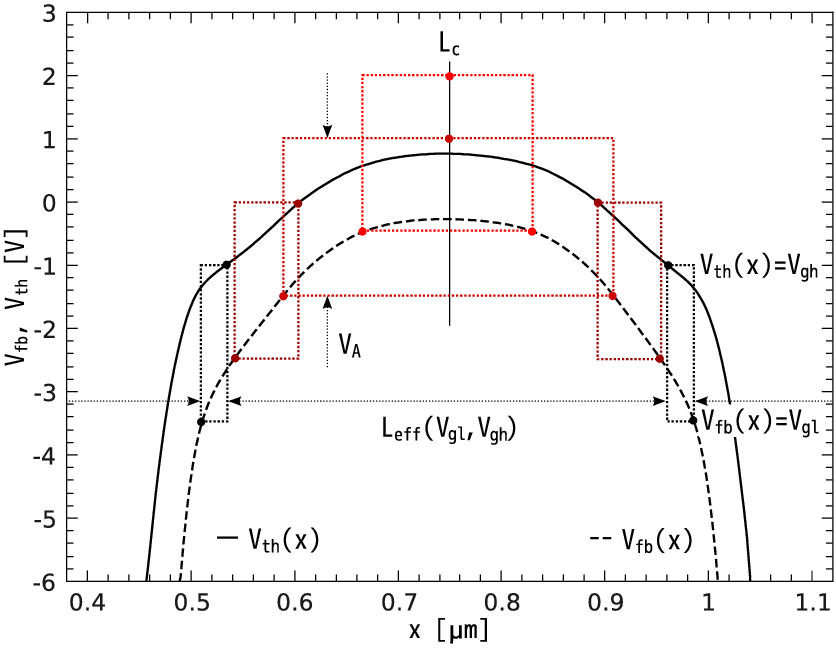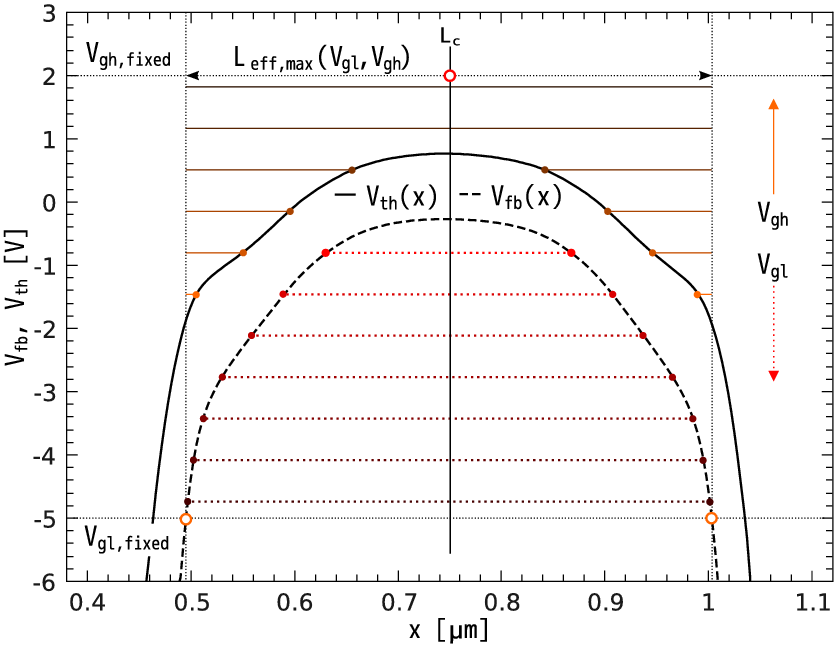Next: 4.2 Interface State Density Profile of Unstressed Device Up: 4.1 Basic Principles of Charge Pumping Measurements Previous: 4.1.1 Local Threshold and Flatband Voltages
It should be noted that the area flooded with holes and the area flooded with electrons overlap in the Leff region, between x1 and x2
Therefore, the interface states in this overlapping region Leff are able to capture holes and electrons alternately. Through a repetition of the processes described above, recombination proceeds in Leff. In contrast, outside of the Leff region, the supply of either electrons or holes is insufficient for recombination to take place. Because the recombination process at position x begins almost abruptly when Vgh rises above Vth(x) or Vgl falls below Vfb(x) [173], the region in which recombination does proceed can be clearly distinguished from the region in which no recombination takes place in terms of the local threshold and flatband voltages. These findings lead to the conclusion that
This argument clarifies the geometrical characteristics which determine the value of the recombination currents Icp. It should be noted that an overlapping region Leff is also formed around the source as can be seen from an argument parallel to the above. In Figure 4.4 on increase/decrease of the effective channel length as a function of the applied gate pulse in the case of constant and varying amplitude CP technique is presented.
(a) (b)
(b)
|